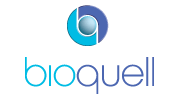Channels
Special Offers & Promotions
Vapour vs. Aerosol Hydrogen Peroxide Automated Room Decontamination Systems Compared
Hydrogen peroxide-based automated room decontamination (ARD) systems for hospitals have received lots of attention in recent years.
 Their efficacy at eliminating unwanted pathogens from surfaces makes them ideal for infection control in hospitals and bioburden management in pharmaceutical production. Several systems are available on the market, typically hydrogen peroxide vapour from 35% w/w hydrogen peroxide (HPV) and aerosolised hydrogen peroxide from 5-6% w/w hydrogen peroxide (AHP). Although in principle, both systems use hydrogen peroxide, the concentration as well as the technologies used to deliver the active agent are fundamentally different. Bioquell, the leading expert in HPV bio-decontamination, has recently published a white paper which compares both systems in terms of efficacy and potential for clinical impact.
Their efficacy at eliminating unwanted pathogens from surfaces makes them ideal for infection control in hospitals and bioburden management in pharmaceutical production. Several systems are available on the market, typically hydrogen peroxide vapour from 35% w/w hydrogen peroxide (HPV) and aerosolised hydrogen peroxide from 5-6% w/w hydrogen peroxide (AHP). Although in principle, both systems use hydrogen peroxide, the concentration as well as the technologies used to deliver the active agent are fundamentally different. Bioquell, the leading expert in HPV bio-decontamination, has recently published a white paper which compares both systems in terms of efficacy and potential for clinical impact.
Bioquell HPV is created from a rapid flash-evaporation of specially formulated 35% w/w hydrogen peroxide solution. Once the vaporisation phase (and main kill phase) is over, the Bioquell technology begins an aeration phase, transforming hydrogen peroxide vapour back into water and oxygen. In contrast, AHP systems produce an aerosol from a solution containing 5-6% w/w hydrogen peroxide combined with other chemicals. Their process doesn’t include any active aeration phase but solely relies on passive breakdown of hydrogen peroxide over a long period of time before room re-entry is safe enough to proceed.
The main difference between the two technologies is that Bioquell HPV achieves a well proven >6-log reduction of pathogens from all hospital surfaces. On the other hand, AHP systems are considerably less effective reaching reductions in the 4-log range or lower, and, furthermore, suffer from incomplete distribution around an enclosure. This results in a variable level of reduction around a given enclosure. They are also significantly affected by high relative humidity (>50%) commonly experienced in indoor environments. A number of studies have shown that low-concentration AHP systems (5% w/w liquid hydrogen peroxide converted into an aerosol) eliminate 85-89% of C.difficile surface contamination. One study even reported that 50% of rooms remained contaminated with the pathogen. In comparison, Bioquell HPV reached total surface decontamination (100% reduction). Low hydrogen peroxide concentration combined with incomplete distribution of the solution into a room seems to be the main reasons why AHP systems scored so poorly compared to HPV.
Fil Horta, Bioquell’s UK Heatlhcare Sales Director, commented, “Many studies demonstrate the supremacy of Bioquell HPV when it comes to hospital room decontamination. A long list of aspects such as efficacy, distribution, cycle time, safety, repeatability and reliability as well as regulatory position puts it ahead of AHP systems. Bioquell HPV is should be the automatic response to bio-decontamination. Bioquell HPV eliminates doubt.”
To read the full ‘Hydrogen peroxide automated room decontamination: vapour vs. aerosol systems’ white paper: http://www.bioquell.com/en-uk/resources-and-support/white-papers/anhydrogen-peroxide-decontamination-vapour-vs-aerosolised-systems/
Media Partners


